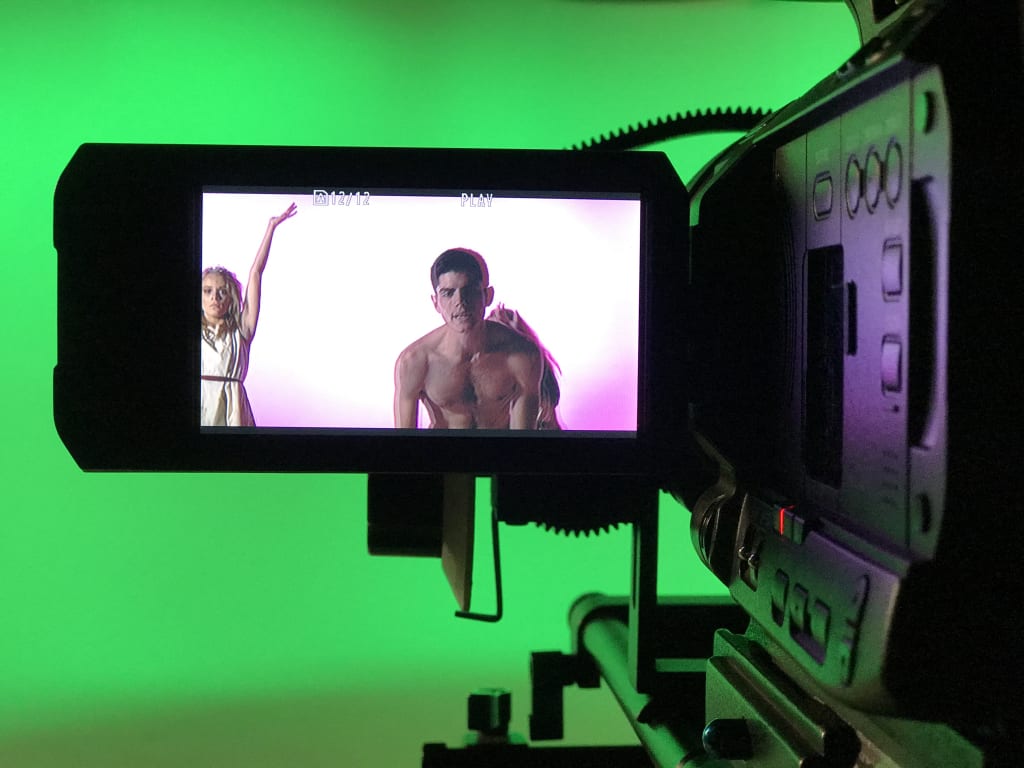You Wanna Make a Music Video?
A Quick Guide from Experience

If you saw either of my last two music videos, you’re probably thinking to yourself, “That was pretty cool!” Or perhaps not. Either way, if you’re considering making your own video or are an overly staunch critic, you should know what exactly goes into the making of a music video.
The Music
The first ingredient is the music itself. I found a great co-writer, Tim Bezy with Tim Bezy II Photography. Together, we wrote a bunch of songs and chose some of our favorites to take to the next level (if you want to learn more about how I wrote the songs, read my blog post "My Creative Process"). Next up is production. I spoke with eight different studios, three local producers, and two groups of local musicians before I found the right man for the job: Mckale Turner at Loocyd Music. Together we spent months tweaking tracks, because perfection takes a lot of time. Once the songs were as perfect as could be, I showed a small trusted group of people to gather feedback and to hopefully catch anything I missed.
A word to the wise: most people will just say, "Sounds great!" until you ask for their honest, critical opinion. Then comes the "Well..." and that's what you need. What's the point of releasing something that only sounds good to you?
The Video Treatment
As soon as the songs were perfected, we began brainstorming a plan for the music video, AKA the video treatment. The goal of a video treatment is to map every scene alongside the lyrics of a song. That way everyone involved is on the same page the day of the shoot, and you will have a variety of lip-synced scenes to choose from during editing. Since this process involves a lot of visualization, you need to decide on a few things: location, cast, choreography, props, and costumes.
Location
In order to visualize the video treatment, you need to decide on a landscape. Do you want a beach, forest, mountain, etc.? For "Ripples on the Water," Tim and I decided we wanted a body of water, but went back and forth on a river or lake. So we thought of the coolest lakes and rivers, looked up their phone numbers, and started calling.
Fun Fact: property owners/businesses typically aren't totally stoked about you using their venue for around six hours, so be mega-polite and grease the wheels with money from your video budget. Remember that even if you're paying them, you're a liability if someone gets hurt on their property, and without a written agreement, they're responsible for stuff you break or damage. Not to mention, your video could misrepresent their business/location, so don't expect these people to bend over backwards for you.
I called seven different places for "Ripples on the Water" and 12 for "Fighting this Feeling" before getting in touch with the right places for the right prices, so don't expect the first call to go as planned unless you know them personally. Also before you decide on a location, visit the place in person to figure out lighting, camera placement, etc. Don't rely on pictures. One of the locations looked twice as big in photos, and lighting would've been awful.
Cast
Casting can be very difficult. People are often excited initially, but quickly shy away as the pressure of being on camera starts to set in.
Pro tip: keep your cast as small as possible. Every person is a variable, and between injuries and last second excuses, you want as small of a doubt as possible that everyone will be at the shoot. Otherwise, you've just wasted people's time, your money, and even people's willingness to participate. Fortunately, my small casts of two and four were reliable and professional, and their schedules aligned with the film crew's, the venue's, and my own.
Choreography
Soooo, you think you can dance? If so, then give it your best shot like I did after only having two classes in college. Otherwise, you can either hire someone or cast someone who also happens to be a dancer (this is also what I did). Whatever you decide on, schedule rehearsals in advance so you aren't wasting a bunch of takes on getting the moves right.
Costumes/Props
Bring extras of everything if possible, because stuff breaks, tears, or gets huge stains, and that won't look great. Be scrappy. That ring that was thrown into the water in "Ripples on the Water" costed me $1 at a thrift store. The colored contacts in "Fighting this Feeling" ($20 a pair) were more expensive than all of the costumes, props, and makeup combined. If you look and ask around, there's always a more cost-effective way to achieve the look you're going for.
One More Huge Detail
Somebody's gotta film this thing! Fortunately, my co-writer is also a professional photographer at Tim Bezy II, but if you're going to invest in any of the five big things I just described, then definitely direct the most money into video quality. It doesn't matter how cool you are. Tim told me:
"If you are literally Taylor Swift and an amateur does the video, you won't be taken seriously."
The Day of the Shoot
Assuming everyone shows up (on time hopefully) and avoiding any detrimental catastrophes, your music video is finally ready to be filmed! Something that worked great for me was always being the most energetic person in the room. Others will often follow suit. Also, you're asking people to act/dance for a long period of time, so bring food/drinks and allot enough time for your cast/crew to take ample breaks. If something goes wrong, for me it was a cut on a dancer's foot, don't waste time panicking. Just grab a band-aid, wipe up the floor, and do whatever it takes to move on, because time goes by so much faster than you expect.
Editing
This takes so long, but it's totally worth it! Now you've got to find the best clips out of every take you filmed and sync them to the music with smooth transitions and impressive effects. This can take weeks before the video is smooth and pristine, and hopefully your lips sync-up with the music. Otherwise it'll take a lot longer, and you may have to re-shoot a few scenes. Again, having Tim Bezy on my team helped a lot, because I actually didn't know anything about editing. Also having a broad selection of B-Roll to choose from was handy.
Finally...
Once you feel confident that the video is as good as it will get, it's time to put it in front of as many people as possible and await their response. I posted mine on YouTube and Facebook (@TheLombardiPartyyy) with links on my website, Instagram (@the_lombardi_partyyy) and Twitter (@jlombardgustie). Be prepared for criticism that isn't always constructive. Someone on YouTube with the username You Suck commented "You Suck" on my "Fighting this Feeling" video. Don't even trip. Haters will always be around, so don't take any criticism to heart that won't make you better.
As always, thanks for reading! If you want to learn more, feel free to message me through my site, jlombardimusic.com, or my Facebook page.
About the Creator
Jonathon Lombardi
I'm a Singer Songwriter with a Physics Degree. If you like my posts, then check out my website www.jlombardimusic.com to listen to my music, watch my music videos, and read more blogs.







Comments
There are no comments for this story
Be the first to respond and start the conversation.